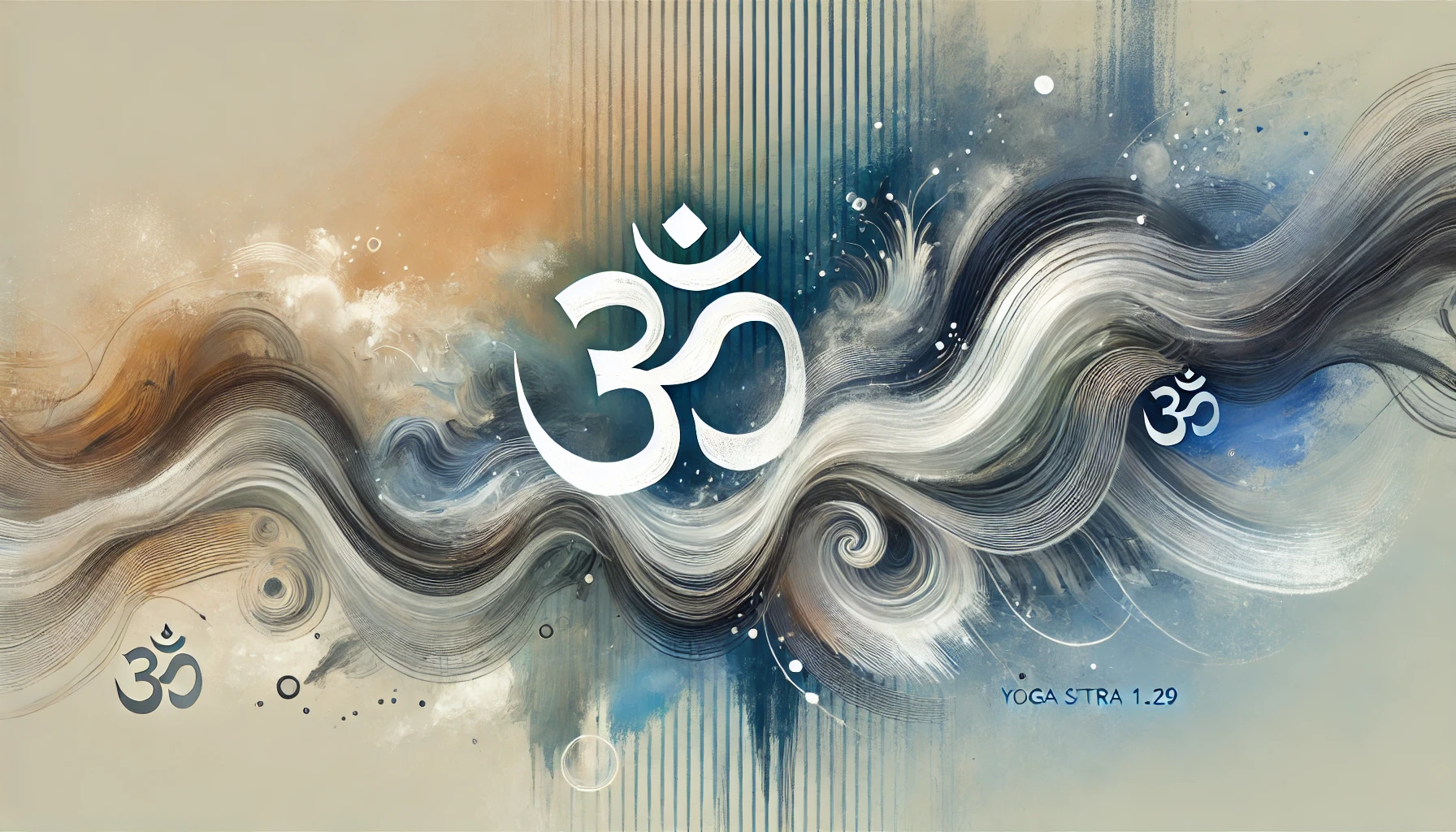
Yoga Sutra 1.29: Tatah Pratyak Chetanadhigamo’pyantarayabhavascha
Introduction
Yoga Sutra 1.29 describes the profound effects of meditating on Om (Pranava). This verse, “Tatah Pratyak Chetanadhigamo’pyantarayabhavascha,” teaches that through deep contemplation of Om, one attains inner self-awareness and freedom from obstacles. Understanding this sutra helps practitioners develop clarity, focus, and spiritual insight.
The Meaning of Yoga Sutra 1.29
The Sanskrit phrase “Tatah Pratyak Chetanadhigamo’pyantarayabhavascha” can be broken down as follows:
- Tatah (ततः) – “From that (meditation on Om)”
- Pratyak (प्रत्यक्) – “Inward, directed toward the inner self”
- Chetana (चेतन) – “Consciousness, awareness”
- Adhigamah (अधिगमः) – “Realization, attainment”
- Api (अपि) – “Also, as well”
- Antaraya (अन्तराय) – “Obstacles, hindrances”
- Abhavah (अभावः) – “Absence, removal”
A widely accepted translation is: “From meditating on Om, one attains inward self-awareness and freedom from obstacles.”
This sutra highlights that chanting Om not only deepens self-realization but also removes distractions and mental disturbances.
The Benefits of Om Meditation
Patanjali teaches that meditation on Om leads to two major transformations:
- Inner Awareness (Pratyak Chetana Adhigama): The practitioner gains profound self-knowledge and inner clarity.
- Freedom from Obstacles (Antaraya Abhava): Distractions, doubts, and mental turbulence gradually dissolve.
Example 1: The Clear Mirror
When dust is removed from a mirror, it reflects light clearly. Similarly, Om meditation clears the mind, allowing inner wisdom to shine.
Example 2: The Silent Lake
A disturbed lake cannot reflect the sky, but when it becomes still, it mirrors everything perfectly. Meditation on Om brings mental stillness and insight.
Example 3: The Dissolving Fog
Just as the morning sun burns away mist, the vibration of Om dissolves mental confusion, revealing inner clarity.
Why This Sutra Matters
Yoga Sutra 1.29 is crucial because it reveals that meditating on Om is not just a ritual—it is a transformative practice that leads to deep self-awareness and inner peace.
Key Takeaways:
- Meditation on Om leads to profound inner realization.
- Obstacles such as doubt, distraction, and mental unrest dissolve.
- Om chanting clears the mind and aligns it with higher consciousness.
How to Apply Sutra 1.29 in Daily Life
To harness the transformative power of Om meditation, practitioners can adopt the following habits:
1. Establish a Regular Om Chanting Practice
- Set aside time daily to chant Om with focus and devotion.
- Feel its vibration resonate within, calming the mind and body.
- Allow the sound to fade into silence, deepening awareness.
2. Use Om to Overcome Inner Obstacles
- Whenever faced with distractions or doubt, mentally repeat Om.
- Recognize that obstacles are temporary and can be dissolved through steady practice.
- Trust that clarity arises when the mind is in harmony with divine vibration.
3. Observe the Effects of Om Meditation
- Notice how your mind becomes quieter and more focused after chanting.
- Reflect on how inner awareness grows with each practice.
- Use Om as a tool for self-inquiry, peace, and spiritual insight.
By integrating these principles, we develop a mind free from obstacles and attuned to higher wisdom.
Conclusion
Yoga Sutra 1.29 explains that meditation on Om leads to inner self-awareness and removes mental obstacles. By practicing Om chanting with devotion, practitioners experience clarity, peace, and spiritual transformation.
Embracing “Tatah Pratyak Chetanadhigamo’pyantarayabhavascha” as a guiding principle allows us to quiet the mind, discover our true nature, and dissolve distractions on the path to enlightenment.
